Choosing the Best Mulch for Your Plants: A Comprehensive Guide
- January 5, 2024
- 0 comment
Being an avid gardener, I have consistently held firm in my belief in the remarkable impact that mulch can have on a garden. It functions as a safeguarding layer, akin to a protective shield, enveloping your plants and safeguarding them from the unforgiving elements, all while supplying crucial nutrients for their growth. Nevertheless, the pursuit of discovering the optimal mulch for my garden proved to be more intricate than initially anticipated. Allow me to take you on a journey through my experiences and reflections, as I delve into the intricacies of selecting the most suitable mulch for your cherished plants in this exhaustive guide.
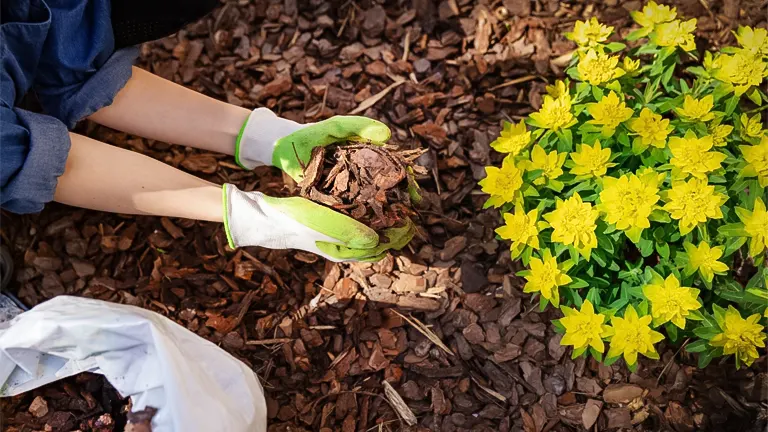
Mulch often goes unnoticed in landscaping, yet its impact on the overall aesthetics and ambiance of any outdoor space is profound. Beyond its role in weed control, mulch plays a pivotal role in enhancing soil quality and mitigating water evaporation and erosion.
For commercial businesses, mulch contributes to a refined and professional appearance, earning its place in any comprehensive maintenance plan. However, the array of mulch types available can be overwhelming, making the selection process challenging.
Within this comprehensive guide detailing various mulch types, we aim to furnish you with in-depth insights into the diverse options and their respective advantages. By delving into specifics, we intend to empower you to make an educated decision regarding the most suitable mulch for your business. The guide will encompass popular choices like wood chips, straw, bark chips, rubber mulch, and more, ensuring that you have the information needed to make a well-informed choice tailored to your specific requirements.
Different Mulches and Their Uses
The realm of mulch is diverse, offering various forms, each endowed with distinct advantages and drawbacks. The choice of mulch for your business hinges on specific requirements and considerations. A pivotal decision in this process involves selecting between organic, inorganic, or living mulch. Organic mulches, derived from natural substances like bark, wood chips, or compost, contribute to soil enrichment as they decompose over time.

Inorganic mulches, such as gravel or stones, offer durability and prolonged weed suppression. Living mulch involves ground covers or low-growing plants that serve both aesthetic and functional purposes. This nuanced exploration of mulch types allows for a tailored decision-making process based on the unique needs of your business landscape.
What is Organic Mulch?
Opting for organic mulch is a favored choice among those seeking natural materials that gradually decompose over time. This category of mulches, derived from organic substances like bark chips, wood chips, and shredded leaves, not only imparts a pleasing aesthetic to commercial landscapes but also serves practical purposes.

The organic nature of these materials ensures they contribute to soil enrichment as they break down, providing sustained benefits over the years. However, it’s important to note that the longevity of these organic mulches comes with the need for consistent maintenance to preserve their optimal condition. Despite the upkeep, the combination of visual appeal and functional benefits makes organic mulches a valuable addition to any commercial business seeking a harmonious blend of natural aesthetics and practicality.
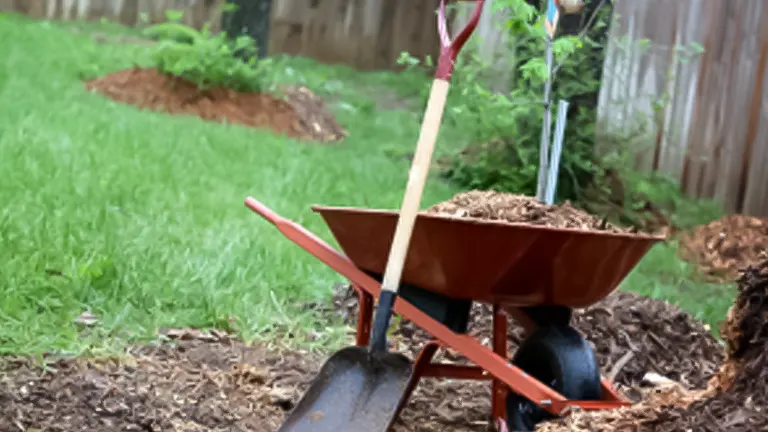
Benefits of Mulch
Mulch offers a plethora of benefits when incorporated into your garden, serving as a multifaceted ally in nurturing plant health. During the summer months, mulch acts as a moisture-retaining shield for the soil, alleviating the need for frequent watering by preventing rapid evaporation. This is especially crucial as the soil tends to dry out swiftly and harden under the intense rays of the sun. By providing a protective layer, mulch safeguards the ground from baking in direct sunlight, creating a conducive environment for plant growth.
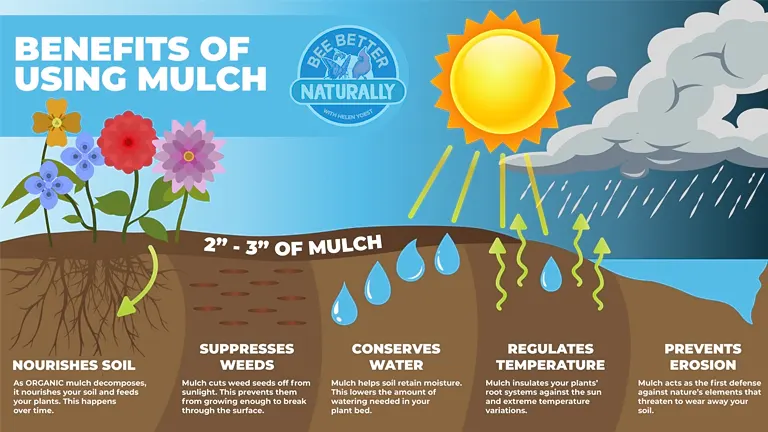
Another noteworthy advantage lies in the prevention of weeds. When applied to planting beds, mulch acts as a light-blocking barrier, inhibiting the germination of weed seeds. A generous layer of mulch not only hinders weed growth but also ensures that it remains hidden beneath, shielded from sunlight, thus promoting a weed-free and flourishing garden environment.
As time elapses, certain varieties of mulch, crafted from organic materials derived from or associated with living organisms, undergo a gradual breakdown process that contributes significantly to enhancing the structure and fertility of your soil.
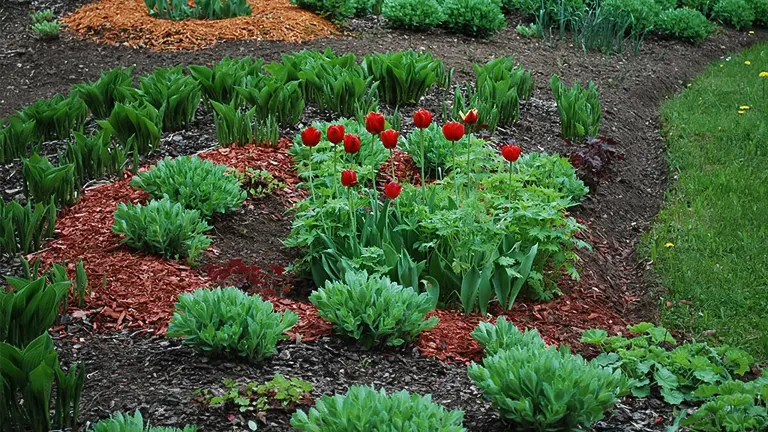
The transformative impact is particularly pronounced when employing compost as a mulching agent, as its rich nutrient content not only fosters the proliferation of beneficial soil organisms but also serves as a potent fuel for robust plant growth.
Beyond its role in soil improvement, mulch plays a crucial role in combating climate change by preventing the release of carbon, a potent greenhouse gas, into the atmosphere. By providing a protective cover for the soil, mulch effectively retains carbon, thereby contributing to the mitigation of greenhouse gas emissions and promoting a more sustainable and environmentally friendly gardening practice.
When to Add Mulch
Determining the ideal moments to incorporate mulch into your gardening routine is crucial for optimizing its benefits. As spring arrives, it’s advisable to assess the mulched sections of your garden and replenish the layer if it appears to be thinning.
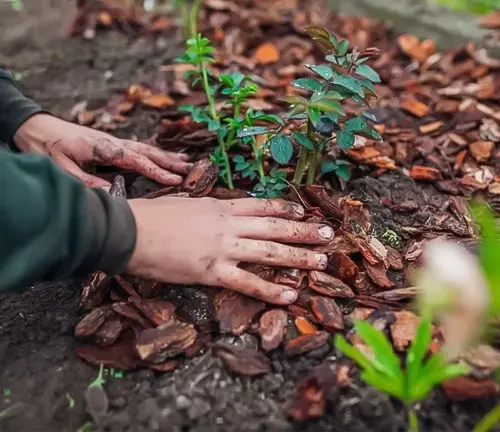
If you are undertaking a substantial mulching project, especially for the first time and covering extensive areas, consider arranging a delivery from a bulk supplier. This not only proves to be a more cost-effective option compared to purchasing numerous bags of mulch from a local garden center but also eliminates the need to transport multiple bags in your vehicle to your yard.
Revisit your mulched areas in late fall, taking note of any thinning or areas in need of replenishment, and reapply as necessary. During the winter months, a well-maintained layer of mulch serves as an insulating barrier, assisting in the regulation of soil temperature.

This insulation minimizes stress on plant roots and guards against frost heaving, a phenomenon where smaller plants are displaced from the ground due to repetitive freezing and thawing. It is advisable to wait until the ground has experienced a few freezes before adding mulch as a protective winter layer, ensuring optimal effectiveness.
Best Mulch for Your Garden
Determining the best mulch for your garden involves a nuanced consideration of factors such as your landscape design and the specific plants you intend to cultivate. The optimal choice may vary based on these variables, with each type of mulch offering distinct advantages that align with particular gardening needs. By delving into the unique characteristics and benefits of various mulching options, you can make an informed decision that caters to the specific requirements of your garden, ensuring not only aesthetic harmony but also fostering a conducive environment for the thriving growth of your plants.
Shredded Bark Mulch
Among the widespread and cost-effective mulch options, shredded bark stands out as a popular choice. Sourced from various origins, including cedar trees, shredded bark proves to be particularly effective on slopes, decomposing at a gradual pace. An additional advantage lies in the fact that certain shredded bark mulches are derived from byproducts of other industries, earning them recognition as environmentally friendly alternatives. For further details, it is recommended to scrutinize the information provided on the mulch packaging.
Considerations for Shredded Bark Mulch
When utilizing shredded bark as mulch, be mindful that during the decomposition process, it has the potential to absorb nitrogen from the soil. To mitigate any nutrient deficiencies, especially in instances of poor soil quality, incorporating organic fertilizer becomes crucial. This additional step not only counteracts the nitrogen absorption by shredded bark but also ensures the sustained health and vitality of your plants. Taking these measures aligns with a proactive approach to address potential nutrient imbalances in the soil, contributing to an environment that fosters robust plant growth.
Straw Mulch
Straw mulch boasts a visually appealing golden hue that enhances the aesthetic appeal of your garden. Notably, it exhibits a slower decomposition rate compared to leaves or grass clippings. Preferences may vary among gardeners, with some favoring smaller, shredded straw pieces, while others opt for larger ones. Traditionally employed in utilitarian gardens, particularly around vegetable patches and strawberry plants, straw serves as a practical choice. Its effectiveness extends to preventing mud accumulation on edible crops, making it a valuable addition for gardeners seeking both functionality and visual allure.
Considerations for Shredded Bark Mulch
Ensure that the straw you choose is devoid of weed seeds to prevent inadvertently fostering more weeds than it inhibits. This caution is particularly relevant to oat straw, which is known for its propensity to harbor weed seeds. Thoroughly inspecting and confirming the seed-free nature of the straw you intend to use becomes a crucial step in maintaining a weed-free environment in your garden. Taking this precautionary measure aligns with a meticulous approach to mulching, ensuring that the benefits of using straw as mulch are not compromised by the introduction of unwanted weed seeds.
Compost Soil
Compost looks like soil, except it’s darker, so it sets off plants nicely. This mulch material breaks down quickly but adds to your soil structure the most rapidly. Plus, it’s inexpensive; you can create rich compost for free, even from grass clippings and leaves. Ensure your compost bin heats up enough to kill any weed seeds. Many municipalities give away compost as well. Before spreading it all over your garden, test compost on a small area to check for weed seeds.
Considerations for Compost Soil
When incorporating compost into your gardening routine, consider a few crucial guidelines. Compost, resembling darker soil, not only enhances plant aesthetics but also rapidly contributes to soil structure. This cost-effective material can be created from various sources, including grass clippings and leaves. Ensure that your compost bin generates enough heat to eliminate weed seeds, and some municipalities may offer compost for free. Before widespread application, conduct a small-scale test to check for weed seeds, ensuring that the benefits of composting are optimized without introducing unwanted elements into your garden.
Pine or Cedar Bark Chips Mulch
Often labeled as bark nuggets, these chipped pieces of bark are slower to break down than shredded bark, so this mulch doesn’t stay in place as well as others. As a result, it’s not the best mulch for slopes or other areas where heavy rain may wash it away; the chips tend to float and take off like boats. The nuggets are available in various sizes; the bigger the nugget, the longer it lasts.
Considerations for Pine or Cedar Bark Chips Mulch
When opting for pine or cedar bark chips as mulch, a few key guidelines should be kept in mind. These chips, known for their aromatic and visually appealing qualities, provide effective weed suppression and moisture retention. Ensure that the chosen bark chips are free from added dyes or chemicals. Applying a layer of 2 to 4 inches thick is generally recommended for optimal results. However, be cautious about their potential to temporarily tie up nitrogen in the soil during decomposition, necessitating occasional supplementation with nitrogen-rich fertilizer. Regular checks for any signs of compacting or matting can help maintain the mulch’s effectiveness. Overall, pine or cedar bark chips offer a practical and aesthetically pleasing solution for various garden applications.
Stones and River Rock
Rocks tend to be more expensive than organic mulches. But because they’re inorganic materials, river rock, stones, and landscaping pebbles don’t break down, so they don’t need to be reapplied yearly. However, it also means they don’t improve your soil over time.
Take caution when using stone as mulch because stones get hot in the sun. Stones are often used in cacti and rock gardens. Cover the soil first with sheer landscaping fabric if you use rocks and stones as mulch in an area where plants won’t grow, such as under a deck. This will help prevent weeds from growing up through the rock.
Considerations for Stones and River Rock
When utilizing stones or river rocks as mulch, there are key guidelines to consider. These materials, known for their durability and low maintenance, provide effective weed control and moisture retention. Ensure proper drainage by placing a landscape fabric beneath the stones to prevent soil compaction. Choose stones of an appropriate size, typically between 1 to 2 inches in diameter, to allow for easy water penetration. Be mindful of the potential for stones to absorb and radiate heat, affecting soil temperature. Regular inspections for debris accumulation and weed growth in between stones are essential for sustained effectiveness. While stones and river rocks offer a long-lasting and visually appealing mulching option, considerations for drainage, size, and temperature regulation contribute to optimal utilization in garden landscapes.
Final Concluding Thoughts
In concluding this comprehensive guide on selecting the best mulch for your plants, it’s clear that the choice of mulch is a nuanced decision influenced by various factors. Understanding the specific needs of your garden, from soil enrichment to weed suppression and aesthetic appeal, plays a pivotal role in making an informed decision. Whether opting for organic materials like shredded bark or compost, or inorganic choices like stones, or river rocks, each type of mulch offers distinct advantages.
It’s crucial to consider factors such as decomposition rates, potential nutrient absorption, and environmental impact. Regular maintenance, periodic checks, and a proactive approach to potential challenges contribute to the sustained effectiveness of your chosen mulch. By incorporating these considerations into your decision-making process, you can create a flourishing garden environment that not only looks beautiful but also promotes the health and vitality of your beloved plants. Happy gardening!
Frequently Asked Questions
- How often should I add mulch to my garden?
Mulch replenishment frequency depends on factors like decomposition rates, weather conditions, and the type of mulch used. Generally, a top-up in spring and fall is recommended but assess the thickness regularly. - Is organic or inorganic mulch better for my garden?
The choice between organic (e.g., bark, wood chips) and inorganic mulch (e.g., stones, rubber) depends on your garden’s specific needs. Organic mulches enrich the soil but require more maintenance, while inorganic mulches offer durability with less decomposition. - Can I use compost as mulch?
Yes, compost is an excellent mulching option. It not only enhances soil structure but also provides essential nutrients for plant growth. Ensure the compost is well-decomposed and free of weed seeds before application. - How thick should I apply mulch?
The ideal mulch thickness varies with the type of material. Generally, a layer of 2 to 4 inches is recommended. However, it’s crucial to avoid “volcano mulching” around trees, leaving a gap around the base to prevent moisture-related issues. - What is the environmental impact of different mulches?
Mulches like shredded bark and straw are often considered environmentally friendly. However, it’s essential to be mindful of potential issues, such as the nitrogen-absorbing tendency of certain mulches, and choose options with minimal environmental impact. - Can I mix different types of mulch in my garden?
Yes, mixing mulch types can offer a combination of benefits. For instance, using organic mulch for soil enrichment and inorganic mulch for weed suppression. However, consider compatibility, aesthetics, and potential interactions between different materials.
We’re eager to hear about your gardening adventures! Share your personal experiences and insights on choosing the best mulch for your plants in the comments section below. Your valuable input might just be the guidance fellow gardeners need to make informed decisions and cultivate thriving landscapes!

Edward Smith
Forestry AuthorWoodworking is about more than crafting; it's a harmonious connection with nature, mastering tools, and preserving our environment. I'm here to share my knowledge and experiences with you, forging a future where we can embrace wood's beauty and utility while safeguarding our forests' health and diversity.


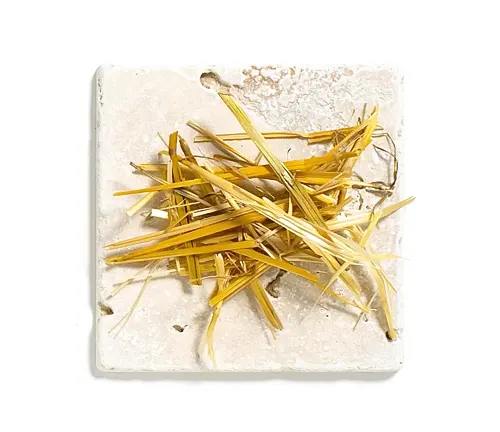
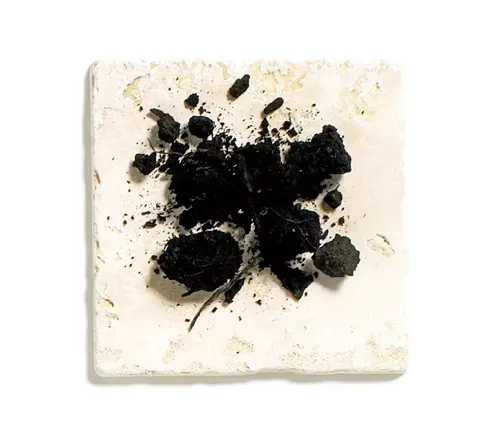
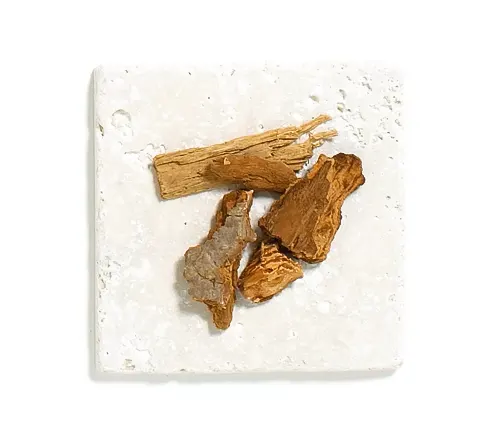

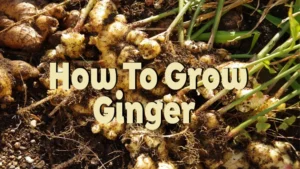

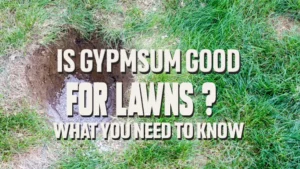

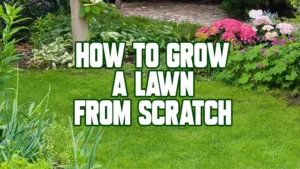

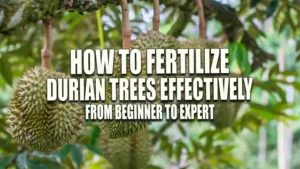
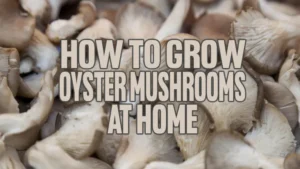
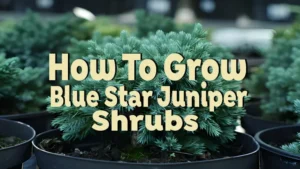

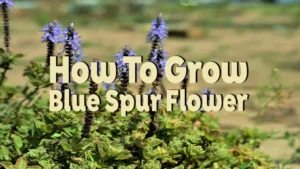
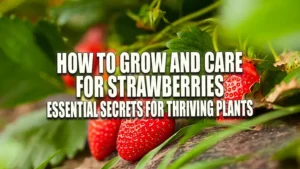
Leave your comment